Affiliate links on Android Authority may earn us a commission. Learn more.
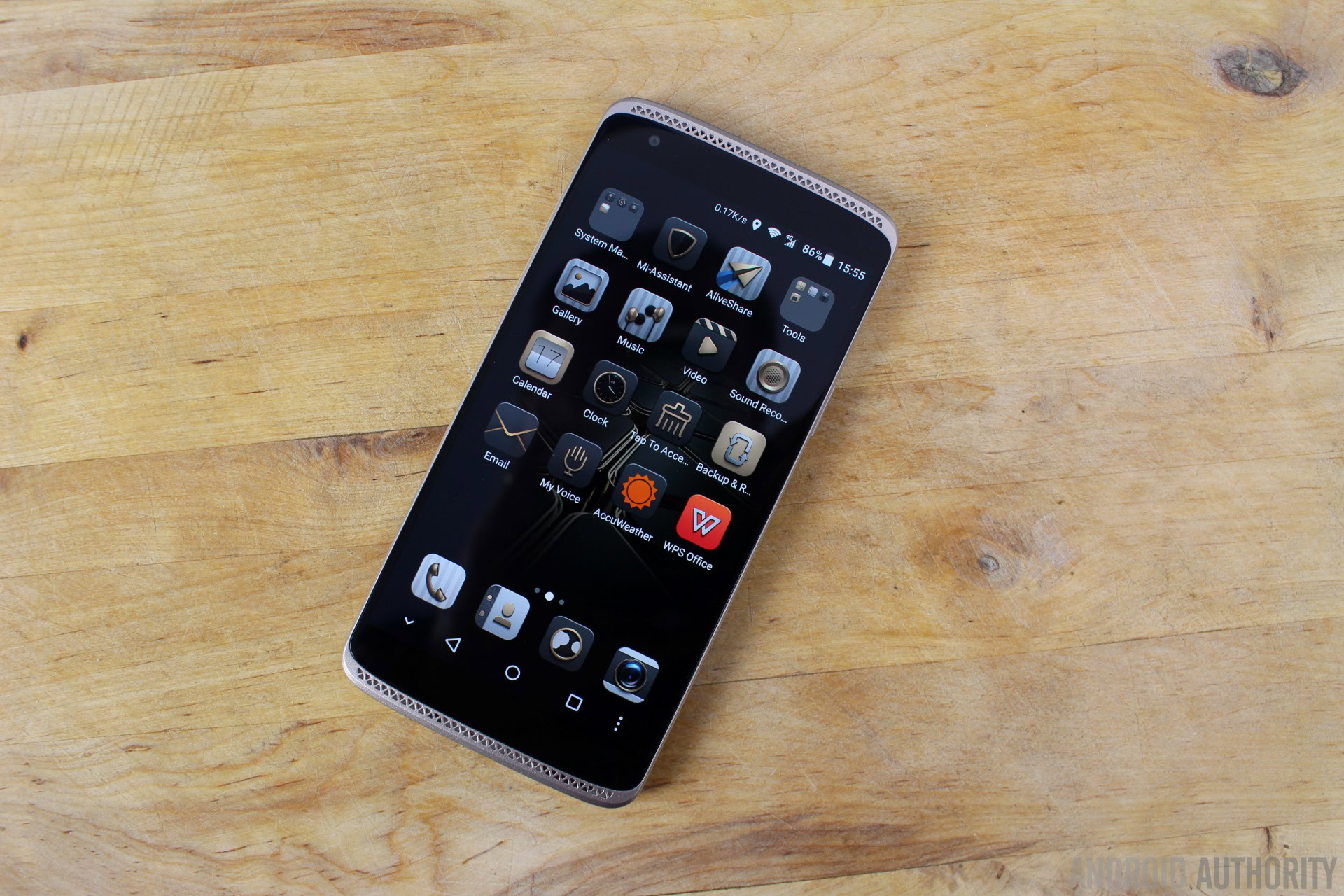
ZTE Axon Mini Premium Edition
What we like
What we don't like
Our scores
ZTE Axon Mini Premium Edition
ZTE launched its Axon flagship smartphone earlier this year. The device has a 5.5 inch display and a Snapdragon 810 processor. At the same time ZTE also mentioned that it had a “mini” version in the pipeline. Then back in October we got our first official details of the 5.2 inch Axon Mini. Now the phone is available to buy from AliExpress for $389.60. I got hold of one a few days ago and I have been testing it out, this is what I discovered.
Design
The design of the ZTE Axon Mini Premium Edition is certainly striking. Not only do you get the Axon’s triangle moire design at the top and the bottom of the device, but the phone comes in gold or silver, quite different to the run-of-the-mill black or white. Like its bigger siblings, the Axon Mini was designed with help from Teague, the design house which worked on the design of the Xbox and the Boeing 787 Dreamliner. There is also another connection to the 787 in that the chassis of the phone is made from Boeing 787 aviation standard aluminium titanium alloy.
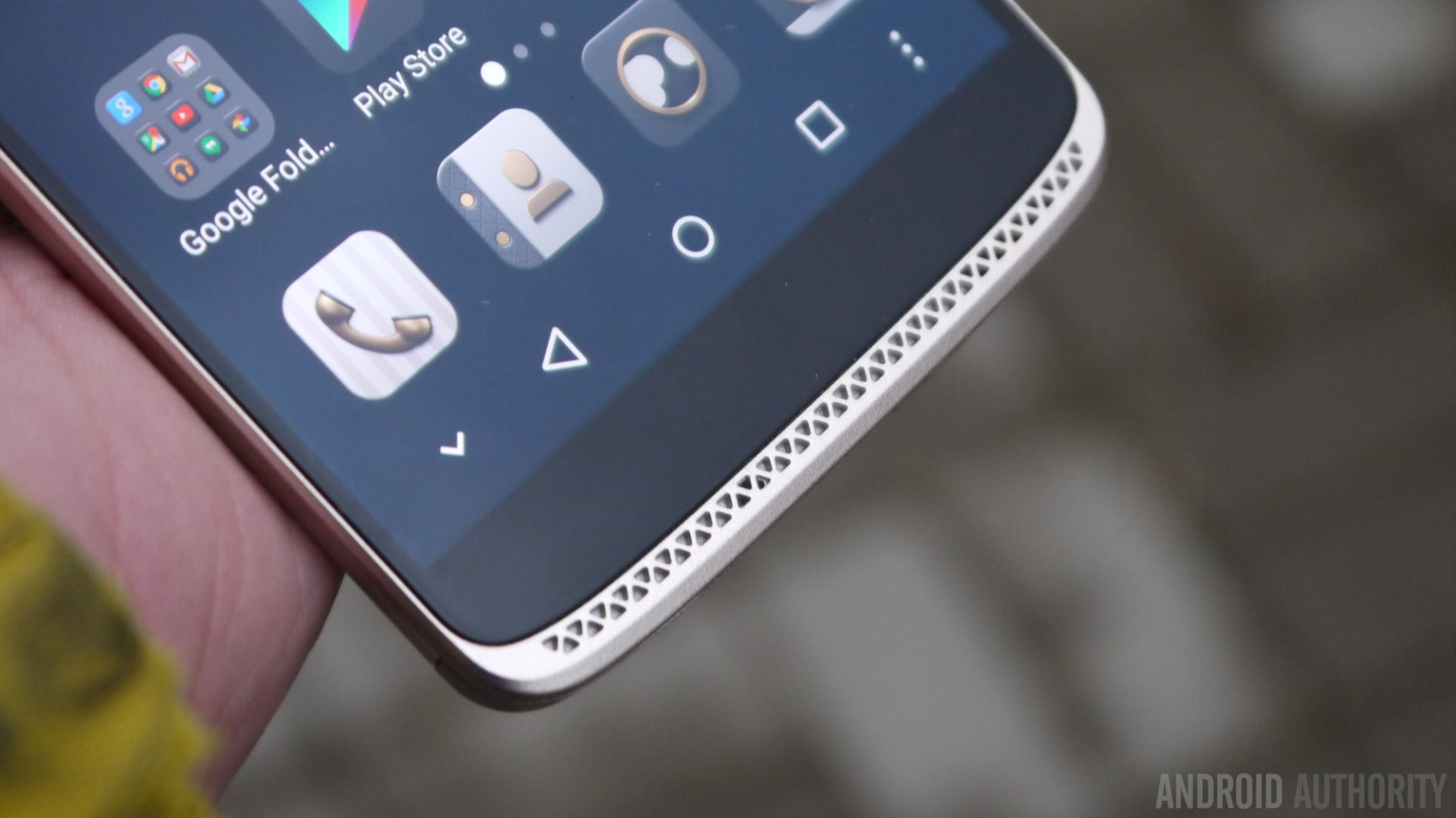
The phone has the “Mini” moniker because it is a smaller version of the 5.5 inch Axon, however I am sure some people will comment on its size. On the front of the device is its 5.2 inch Full HD display, along with the front facing camera and the triangle moire design for the earpiece and the front facing speaker at the bottom.
On the back of the phone is the camera and flash (separated by more triangles), the fingerprint reader and the ZTE logo. The back cover is non-removable and seems to be made of plastic. However it is painted using a metallic paint to try and make it match the metal on the front. At the top and bottom of the back cover is some stitched faux-leather, also sprayed with the same metallic paint.
Going around the phone, on the left is the volume rocker, while the power button and SIM tray are on the right. The micro USB port is on the bottom and the headphone jack on the top.
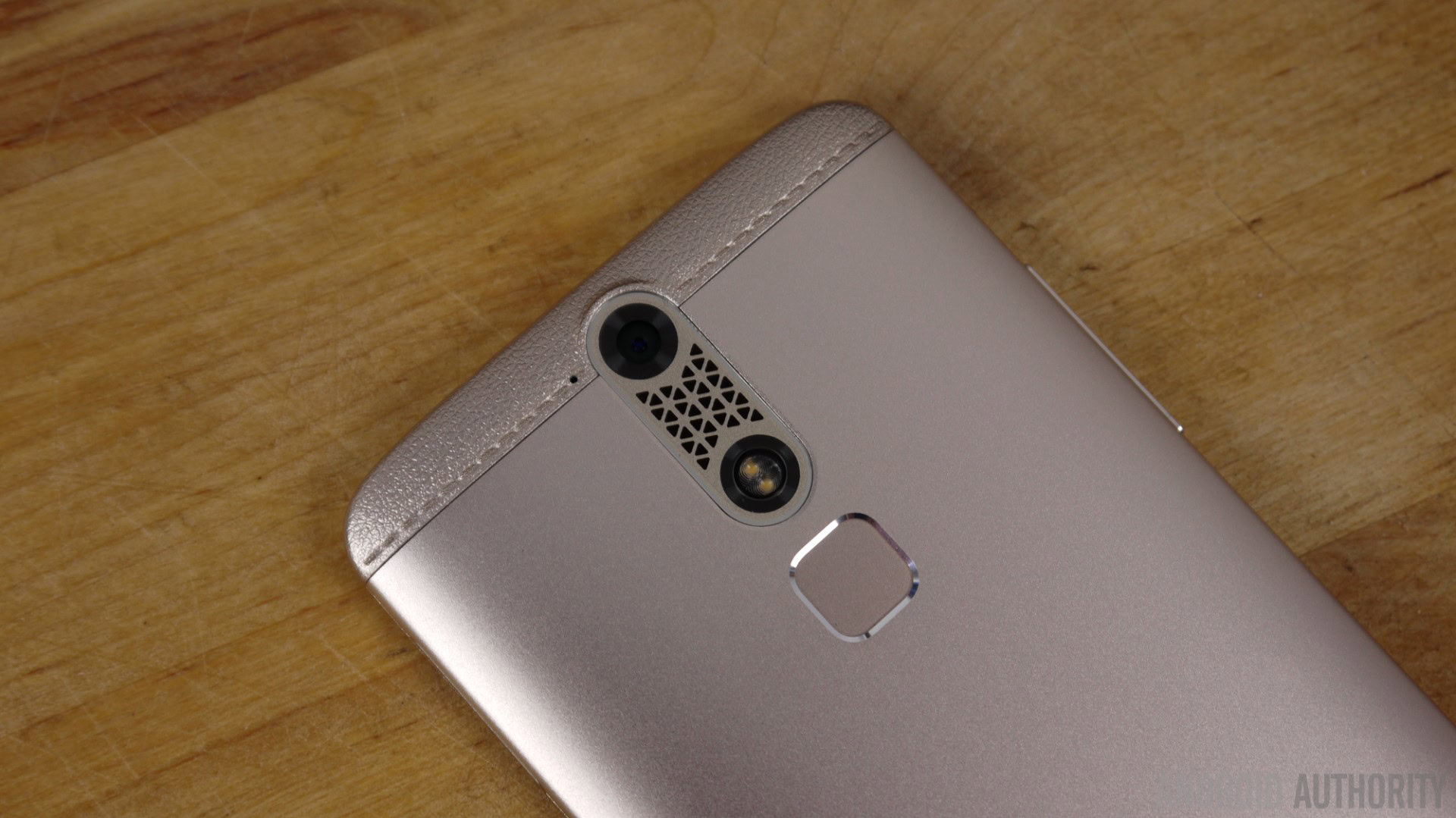
Overall the phone is easy to hold and it feels like a 5 inch phone in the hand. In fact, it is only 3.5mm taller than a OnePlus X, and actually shorter than the 5 inch HTCOne M9. However, the spray painted back cover is very smooth and it might be considered slippery if you don’t grab the sides of the phone.
Display
The 5.2 inch AMOLED display on the Axon Mini is crisp and vibrant. It has a contrast ratio of 5000:1 and a resolution of 1920 x 1080, which gives a pixel density of 423 PPI. The glass is said to be “2.5D’, however it is hard to see any curvature at the edge of the screen.
The display is everything you would expect from an AMOLED screen, deep blacks and bright colors. It has good color reproduction, great viewing angles and high levels of contrast when needed. Overall it is a pleasure to use.
Performance
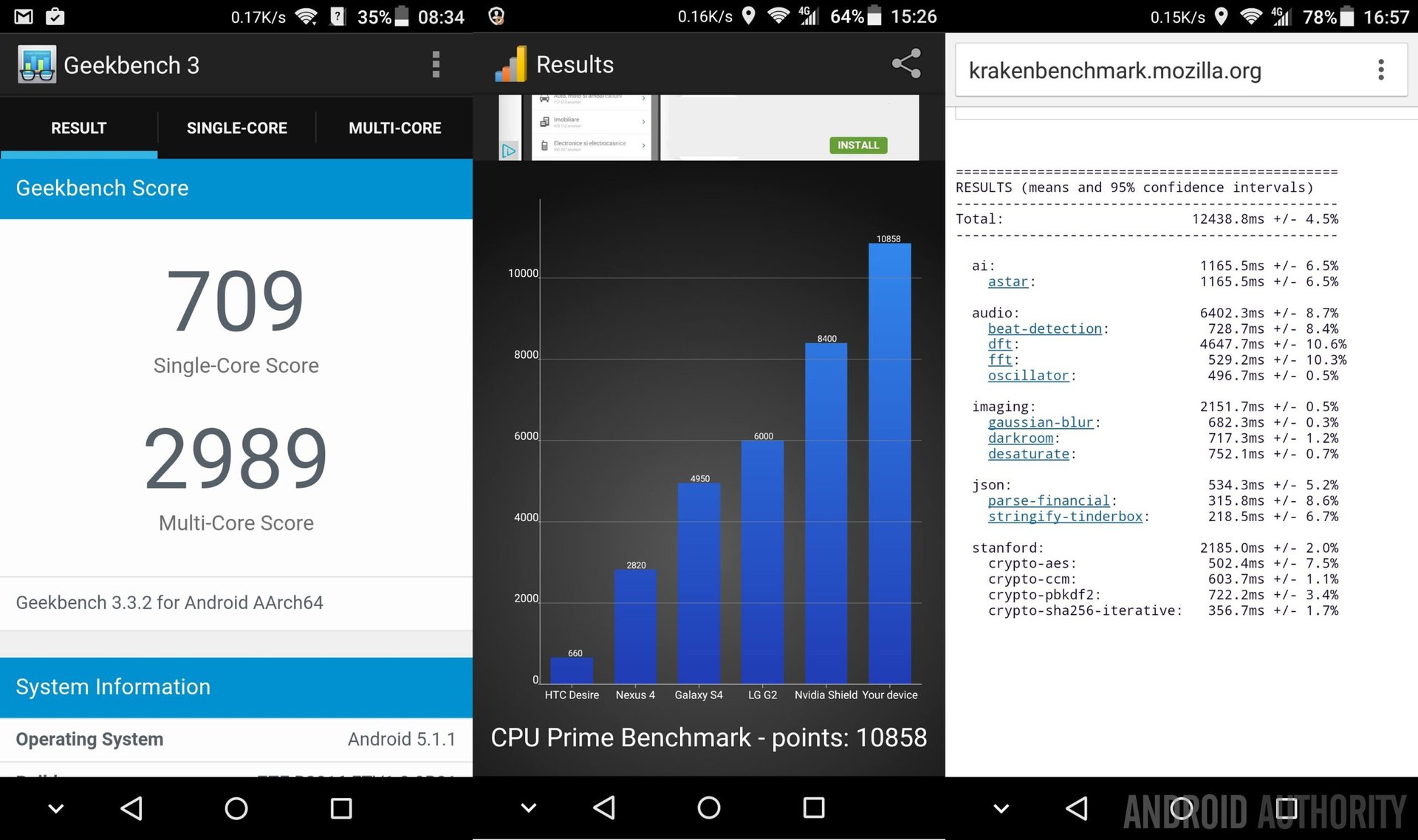
The bigger 5.5 inch Axon uses a 2.0 GHz octa-core Qualcomm Snapdragon 810. For this smaller version ZTE has stuck with Qualcomm but this time opted for the Snapdragon 616. The 616 is also an octa-core processor but this time using eight ARM Cortex-A53 cores, the four fastest of which are clocked at 1.5GHz. On board the chip is also the Qualcomm Adreno 405 GPU, which supports OpenGL ES 3.1, and support for LPDDR3 memory. Talking of memory, the Axon Mini Premium Edition comes with 3GB of RAM and 32GB of internal storage, with the option of adding another 128GB via microSD card.
With 8 cores and a reasonable GPU you aren't going to be pulling out your hair waiting for the phone to react.
We can look at performance in two ways, first what do the benchmarks tell us, second what are the perceived levels of performance. The latter is subjective, while the former is objective. Starting with how does the device feels, well it feels good. With 8 cores and a reasonable GPU you aren’t going to be pulling out your hair waiting for the phone to react. The UI is fast and responsive as is the multitasking, mainly due to the 3GB of RAM. What this shows is that all modern day processors are more than capable of giving a smooth overall experience, including the Snapdragon 616.
When I put the phone side by side with the OnePlus X and the Sony Xperia Z5 Compact, to test web browsing, the Axon mini performs well. For loading and rendering web pages it is basically the same as the OnePlus X and was only ever a second or two behind, if at all. The Z5 always finished displaying the pages first, in every test, a testament to the speed of the Snapdragon 810.
ZTE has added quite a bit of extra value with the pressure-sensitive display, the fingerprint reader and the high-end audio.
However, when it comes to benchmarks the story is a little different. Using Mozilla’s Javascript benchmark, Kraken, the Axon Mini completed the test run in 12,428ms, which is slower than the MediaTek Helio X10, found in the Redmi Note 2, and the Kirin 935 found in the HUAWEI Mate S, both of which are also Cortex-A53 based octa-core processors. The main reason is the clock speed, the MediaTek and the HUAWEI processors are clocked at over 2.0 GHz.
This pattern is repeated for GeekBench and CPU Prime Benchmark. The single-core test result for Geekbench was 709 and the multi-core was 2989. To put that into context the single-core score for the HUAWEI Mate S (Kirin 935) is 954 and 3915 for the multi-core test. Likewise the OnePlus X scores 921 and 2409 respectively.
For CPU Prime Benchmark the Axon Mini scored 10,858 compared to 11,963 for the 32-bit Snapdragon 801 powered OnePlus X and 16,084 for the Redmi Note 2.
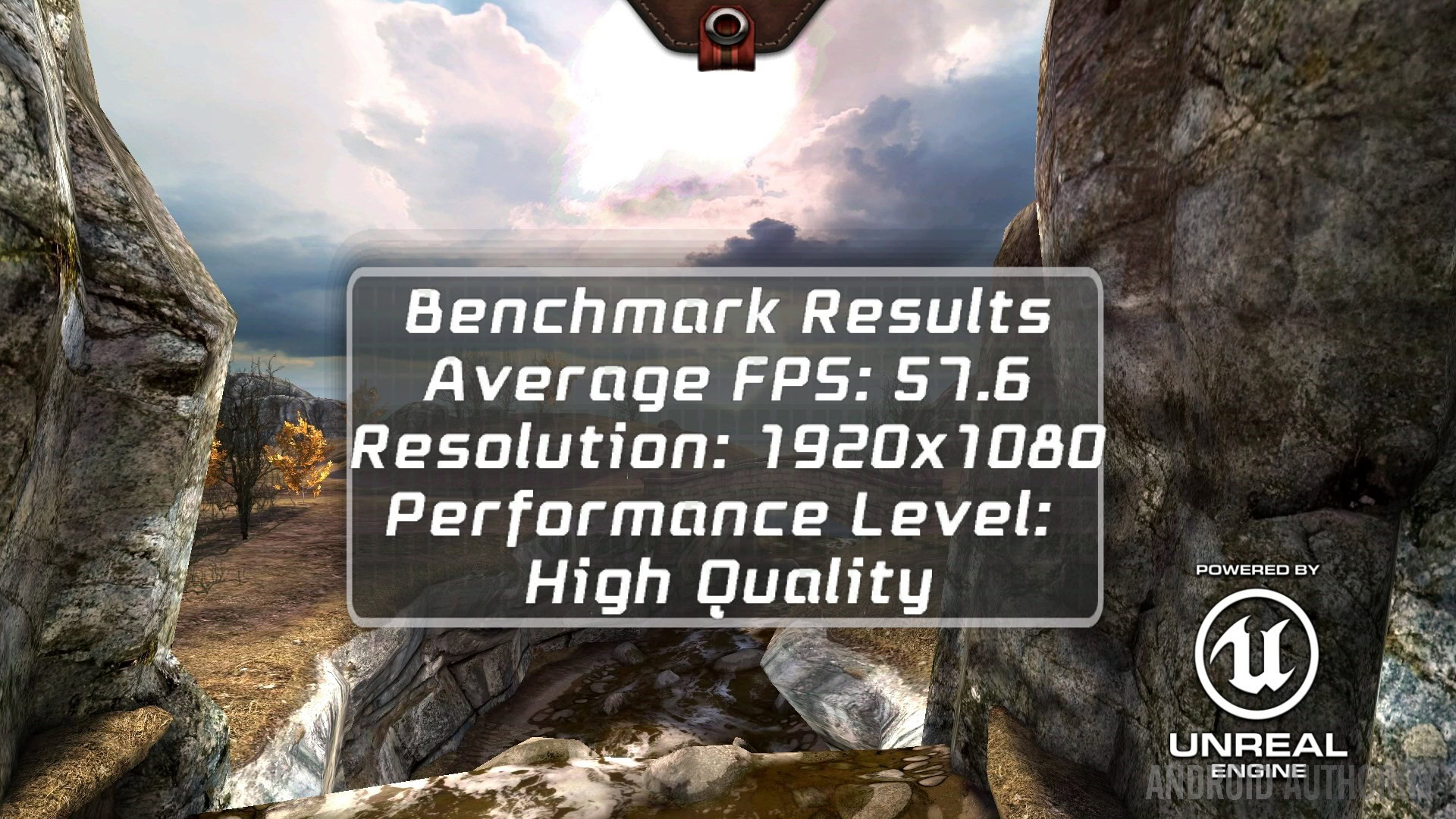
One area where the Axon Mini seems to do well is in 3D gaming. The phone manages a score of 58.9 frames per second on Epic Citadel in High Performance mode and 57.6 fps in High Quality mode. It only starts to falter when moving to Ultra High Quality mode where it only manages 31.8 fps.
Although the Axon Mini is slower than phones like the OnePlus X, the Redmi Note 2 or the HUAWEI Mate S, it isn’t the slowest phone around. If we go to the other end of the budget spectrum, to the Moto G, we can see that the performance of the Axon Mini is actually quite good. The Moto G (3rd gen) scores 524 on Geekbench’s single-core test and 1579 on the multi-core test. Likewise the Moto G scores just 3246 on CPU Prime Benchmark, one third of the Axon Mini’s score.
I guess I would put it like this, the performance of the Axon Mini is perfectly adequate for a mid range phone, however given the price and the “Premium Edition” label, I wonder if really this device deserves a better processor.
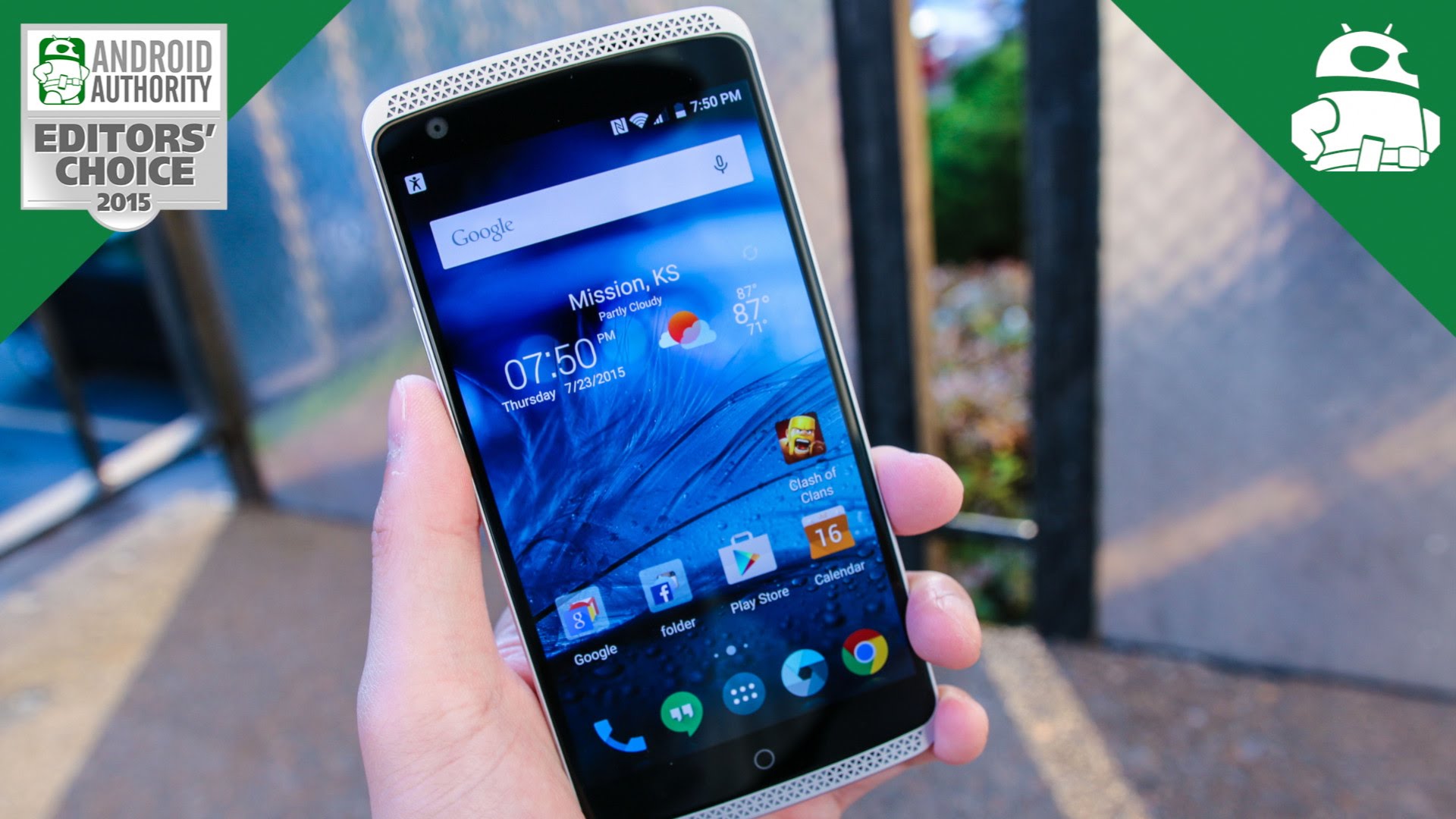
Hardware
But, here is the thing, it is generally accepted that anything over 20-bits, maximum 24-bits, is beyond what the human ear can distinguish. So while I salute ZTE’s efforts, you probably won’t hear the difference in the real world.
Having said that, I am not an audiophile. I tested out the Axon Mini using the supplied earbuds and listened to several bits of music that I know well, and honestly I couldn’t hear any difference between the ZTE device and other phones I had at hand (e.g. the OnePlus X and the Note 4). However, that could be because of the quality of the supplied earbuds.
The 2800 mAh battery provides a good battery life.
The phone comes with the normal suite of connectivity options including Bluetooth, Wi-Fi and GPS, however there is no support for NFC. In terms of cellular frequencies, the Axon Mini will work just about anywhere in the world on 2G GSM. For 3G the phone supports 850/900/1900/2100MHz, which means it should work in many places around the world including in the USA for AT&T and T-Mobile. However, if you need 4G LTE in the USA then this phone won’t support AT&T, Sprint or T-Mobile. For those in Europe and Asia you shouldn’t have any problems with 4G connectivity. As always, you should check with your carrier before buying.
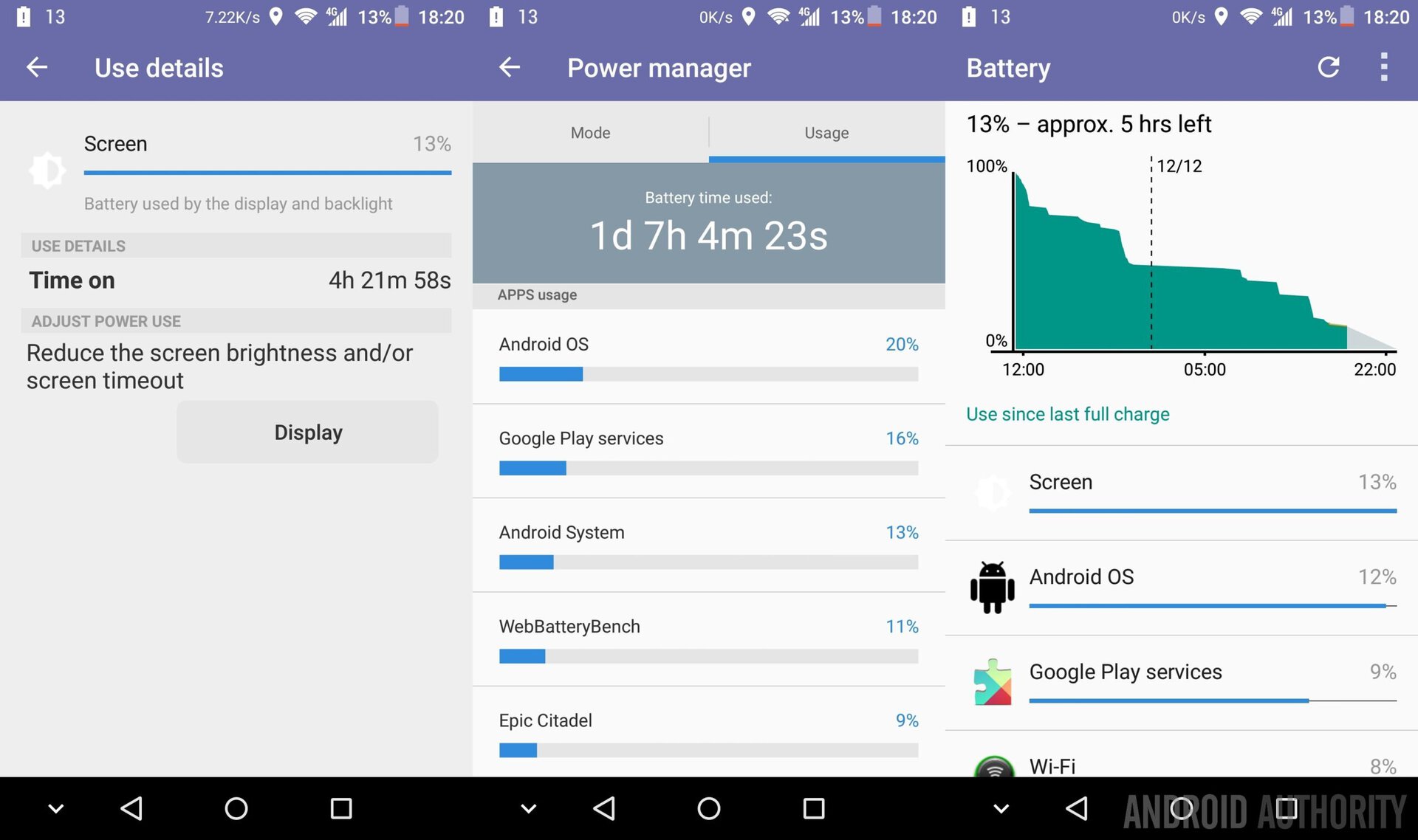
The 2800 mAh battery provides a good battery life. It is good enough to provide a full day of use with around 4 hours of screen-on time, but that is the upper limit as far as screen-on time is concerned. Even on a day with heavy usage, that involved playing a lot of games and taking lots of pictures, the phone still managed 4 hours of screen-on time. With more casual usage, you will get about 30+ hours of standby, with the same 4 hour screen-on time.
There are two features that the Axon Mini sports that aren’t found on the regular Axon: a fingerprint reader and a pressure sensitive screen. The fingerprint reader is on the back of the phone just beneath the flash and can be used as a method for unlocking your phone. Overall the reader is good, but it can be prone to the occasional misread. Also it isn’t that fast, certainly not as fast as the HUAWEI Mate S or even the Galaxy Note 5. However, one nice feature is that you can wake the phone from sleep by just pressing your finger on the reader. That means you can pick up your phone and unlock it in one fell swoop without having to use your other hand.
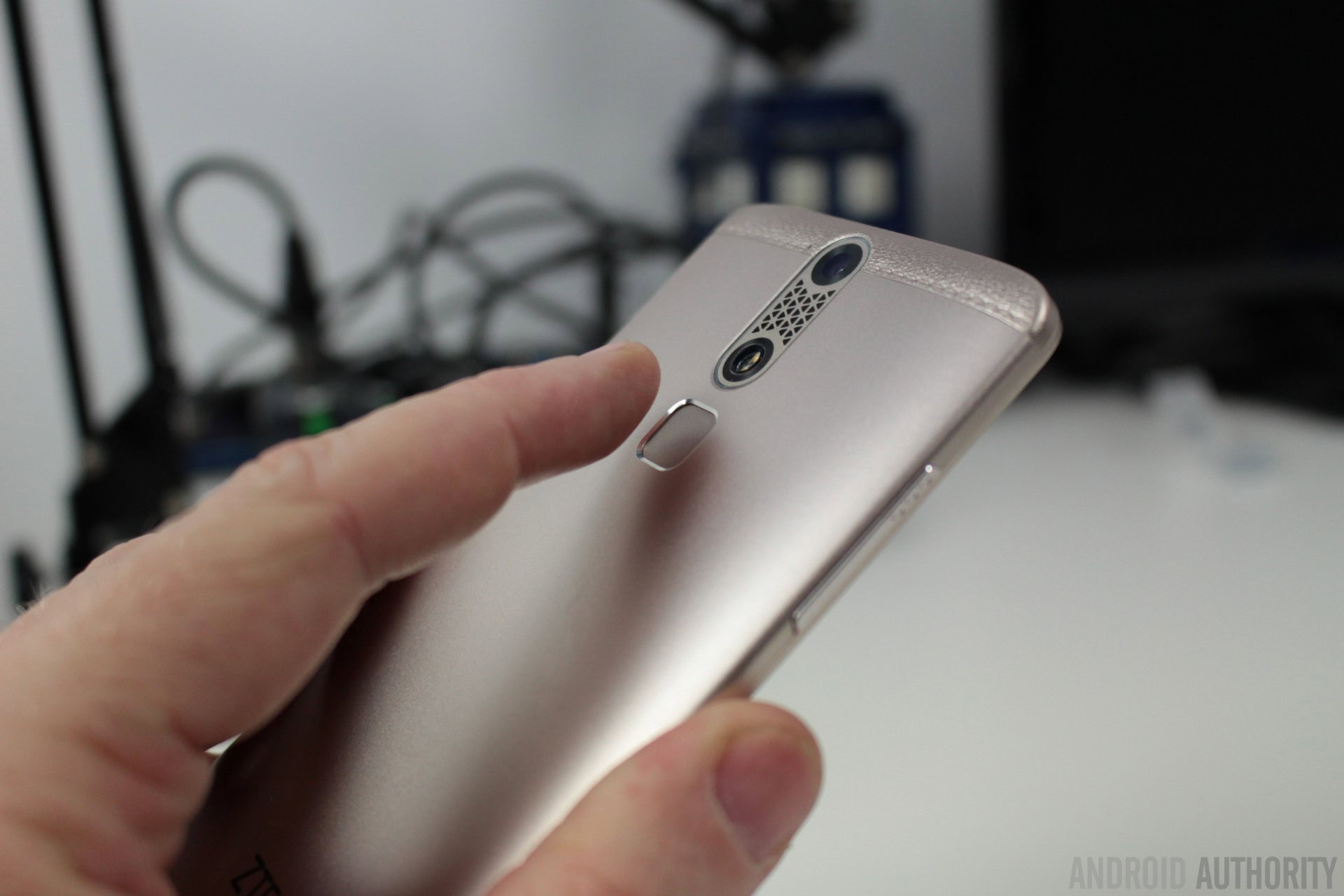
Talking of unlocking your phone, because the Axon Mini Premium Edition has a pressure sensitive screen, ZTE have included the ability for your unlock PIN code to take into account not only which digits you tap in, but also if you use light or heavy pressure when you tap the digit. ZTE are calling it the 3D password. When you set the code you press either lightly or heavily on each of the four digits. To unlock the phone you need to tap the right digits and apply the right pressure. Thankfully there is only light or heavy press for this, otherwise I can imagine some very frustrated users trying to exactly duplicate the pressure used to enter the original PIN.
The pressure sensitive screen also has a few other uses like a hard press on an app icon will show shortcuts, or a hard press on the right/left in the gallery app moves to the next/previous image, and so on.
Camera
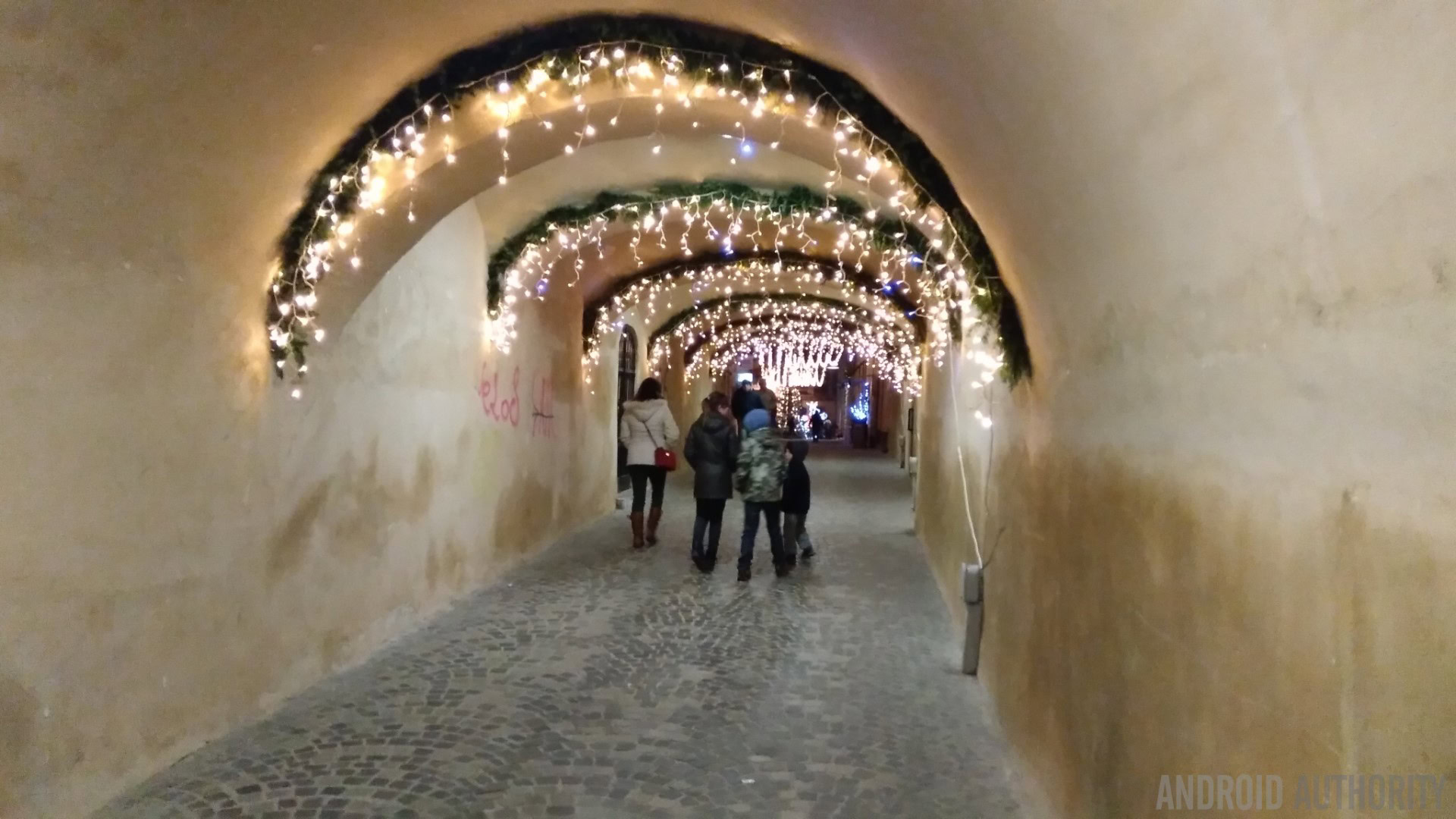
The Axon Mini comes with a 13MP rear-facing camera and a 8MP front-facing camera. I found the main camera to be surprisingly good. It is winter now where I am and we haven’t had a clear sky for several days, I kept waiting for the sun to come out so that I could shoot some photos in direct sunlight, but it never happened. So I took some pictures under a moody and cloudy sky and I was impressed with the results.
I also took some pictures in low-light and at night time. Although lots of noise does creep into the night time photos, I was pleased with how the photos came out. You need a steady hand for sure and like any camera, you can’t capture light that isn’t there. But with a bit of diligence the results are acceptable.
Having said all that, the camera isn’t world class. On the same night trip out, I also took photos with a Galaxy Note 4 and the Samsung device does much better in low-light.
The camera app is fairly comprehensive as it offers a manual mode as well as HDR, Panorama, and a Beauty mode. In manual mode you can set the exposure bracketing, the ISO level, the white balance, the shutter speed and also the focus. Overall the app is easy to use and doesn’t get in the way of your main objective, i.e. to take photos!
Here are some pictures so you can judge for yourself:
Software
Tapping the on screen menu button (the three vertical dots) brings up the launcher customization panel. As well as the ability to alter the icon set, you can choose from a series of solid colored or abstract wallpapers, or download one from ZTE’s online library. There is a built-in slider to give your wallpapers a blurred look, plus you can also alter the desktop transition effects.
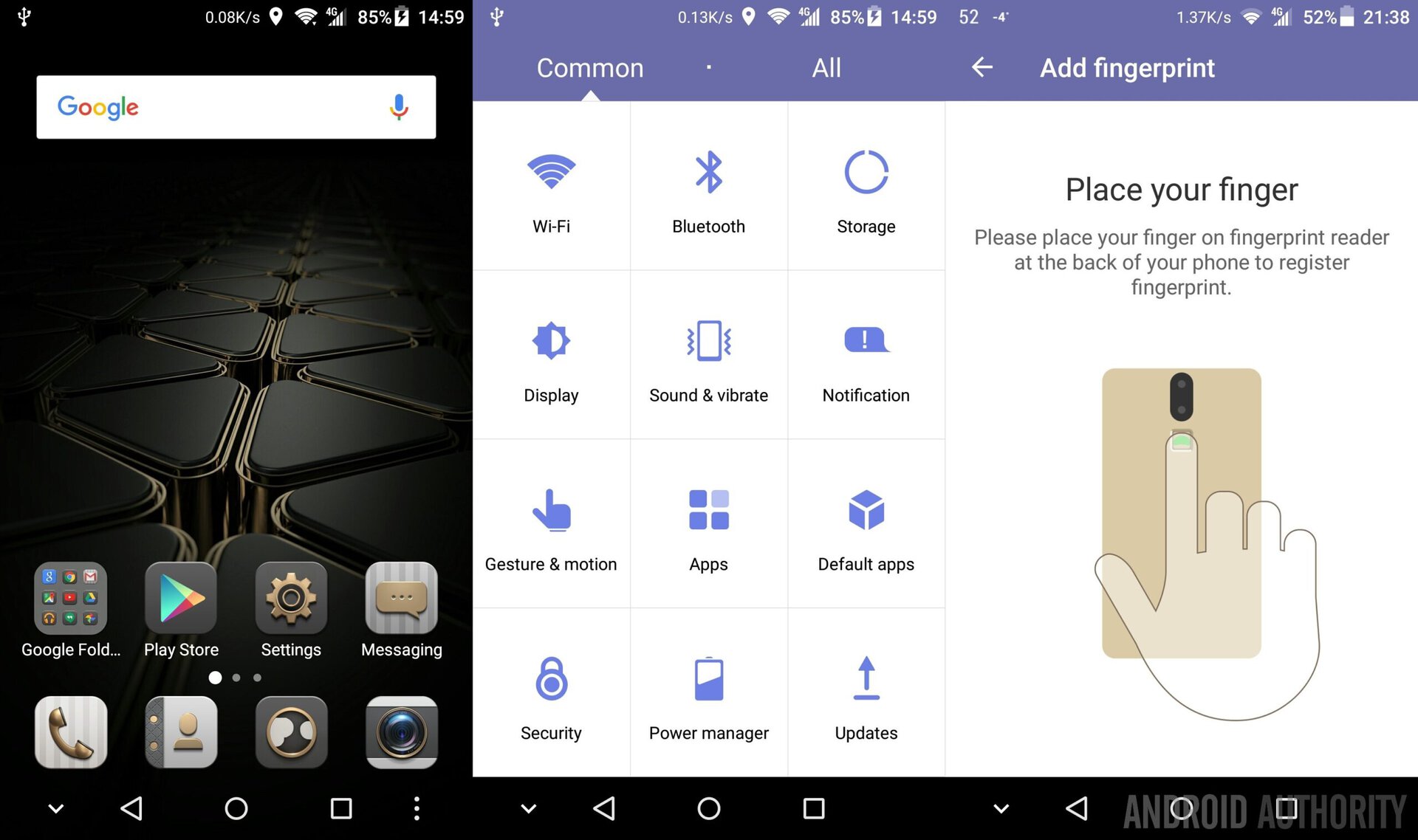
The other thing that is quite different on the MiFavor is the Settings page. It is completely different from other Android handsets, however it is still very easy to use. There are additional sections under the settings for Force Touch (i.e. the pressure sensitive screen), Sky Eye (an eye recognition authentication system), and for the Fingerprint reader.
The Quick Settings toggles have also been slightly tweaked, allowing users to rearrange the shortcuts to any order they find useful, and there are a lot more toggle options available as well, beyond what you find with stock Lollipop. One particular enhancement that appeals to my inner geek is the ability to add the connection speed to the status bar, next to the battery percentage. This tells you how fast you are sending or receiving data on Wi-Fi and on 3G/4G.
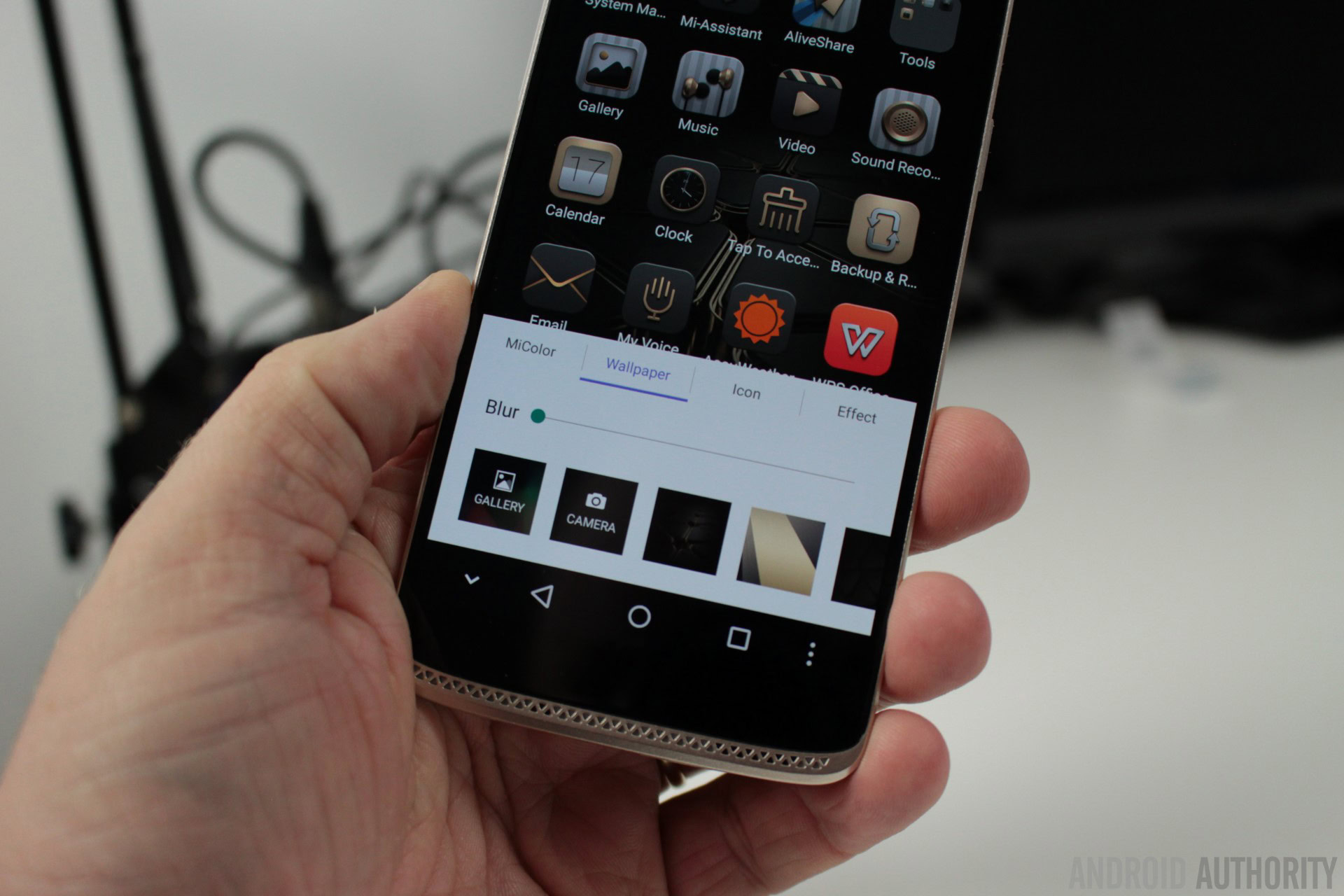
Along with a range of gestures (like three finger pinch to take a screenshot) and 7 different motions (like shake for flashlight), there is also a voice recognition service called My Voice. Unfortunately, it isn’t an always-on service, so you need to activate it by pressing and holding the home button (or via a Bluetooth headset). With My Voice you can set up a sound unlock password (i.e. a phrase to say to unlock your phone), use your voice to control music playback, and speak to answer/decline incoming calls.
Specifications
| Display | 5.2 Inch AMOLED, FHD 1920x1080, pressure sensitive. |
|---|---|
Processor | Qualcomm Snapdragon 616, 1.5GHz, Octa-core 64-bit ARM Cortex A53 Octa-core |
GPU | Qualcomm Adreno 405 @550MHz |
RAM | 3GB |
Storage | 32GB, expandable up to 128GB with Micro SD that uses one of the SIM card slots. |
Camera | 13MP rear-facing camera, 8MP front-facing camera |
Battery | 2800 mAh |
Networks | 2G: GSM:850/900/1800/1900MHZ 3G: WCDMA:850/900/1900/2100MHZ 4G: FDD-LTE:800/900/1800/2100/2600 |
Connectivity | Bluetooth 4.0, GPS, Wi-Fi 802.11b/g/n/ac |
SIM Card | Dual SIM card, dual standby (2 x Nano SIM). Second SIM card slot only supports GSM or can be used to add a Micro SD card. |
Software | Android 5.1 Lollipop |
Dimensions | 143.5 x 70 x 7.9mm, 132g. |
Gallery
Final thoughts
Overall the Axon Mini is an interesting device, ZTE has added quite a bit of extra value with the pressure-sensitive display, the fingerprint reader and the high-end audio. The 3GB of RAM is also good to see, as is 32GB of storage. The main thing I feel that lets down the phone is the processor, it isn’t a deal breaker, but having a better processor would seem more appropriate alongside all those extra features.